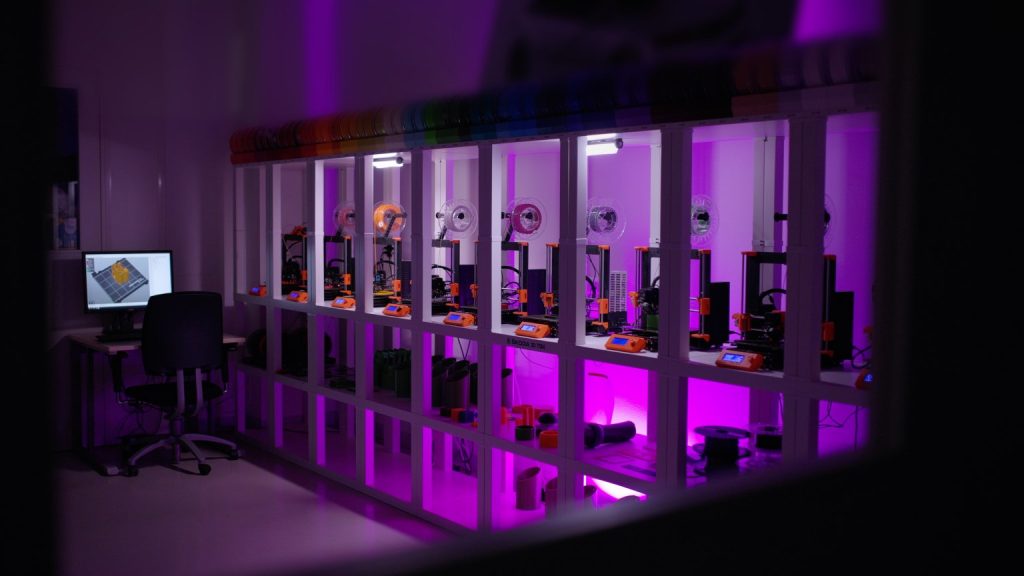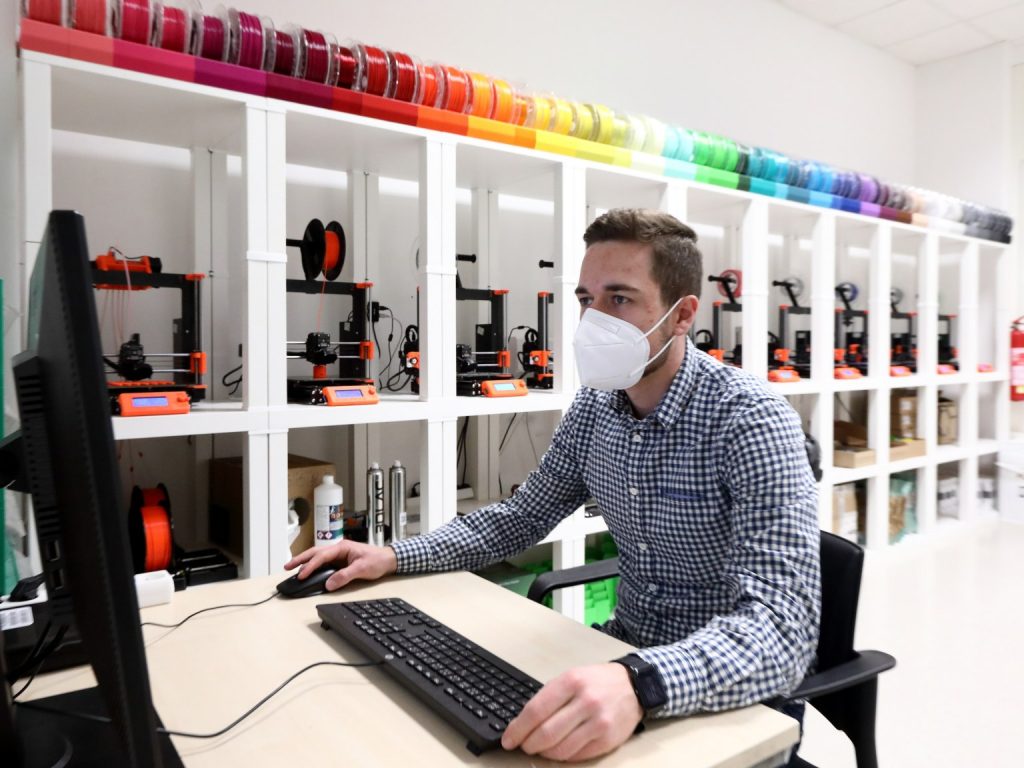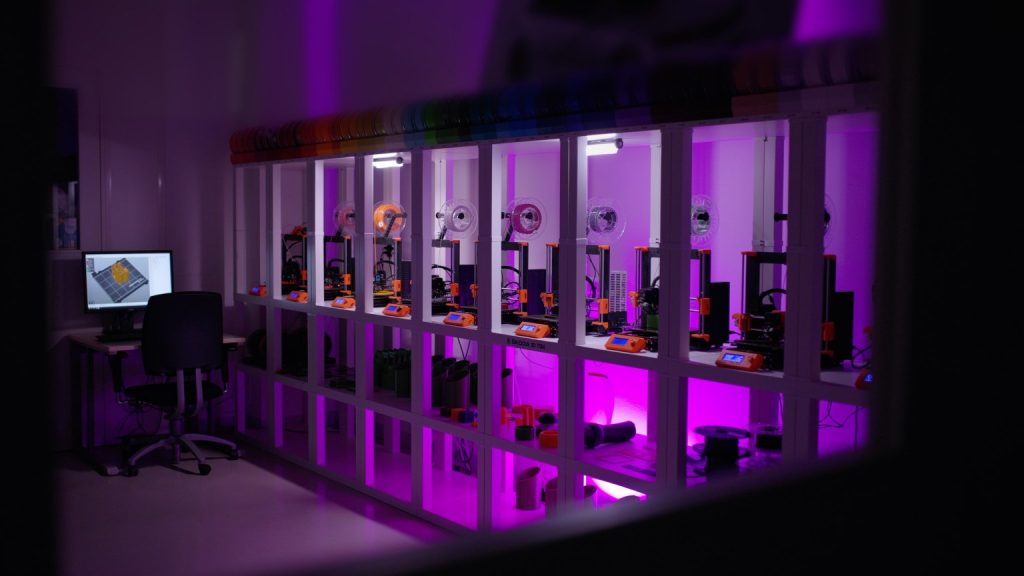Czech car manufacturer Škoda has announced that it’s been using 3D printing to streamline its automotive business, bringing the production of prototypes, spare parts, and tooling in-house.
As part of its ‘More flexible with 3D print farms’ project, the firm has set up a number of print farms featuring systems developed by companies like Prusa. Škoda’s additive manufacturing initiative was recently recognized by the Confederation of Industry of the Czech Republic, whereby the project is now considered one of the country’s five most innovative industry 4.0 applications from the past year.
Additionally, the firm has announced plans for its upcoming ‘FORCE – Future Factory’ initiative, which will see Škoda double down on digitization at many of its manufacturing facilities.
“At Škoda, we use 3D printing to manufacture components and tools faster, more efficiently and more cost-effectively and make targeted use of technologies from Industry 4.0,” said Michael Oeljeklaus, Škoda’s Board Member for Production and Logistics. “This is how we are implementing our FORCE program for the Future Factory and pushing ahead with digitalizing our production sites. I am delighted that our project has been recognized as one of the five most innovative approaches in the area of Industry 4.0 in the Czech Republic.”

3D printing and the automotive sector
Due to the complexity of developing a new car, automotive manufacturers often find themselves in the R&D phase of a new model for several years. This time is largely spent designing, testing, and iterating on ideas, meaning there’s a need for rapid prototyping and short lead times.
Rather than investing in entire manufacturing lines or molds just to prototype a few low-volume parts, carmakers like Škoda can employ the use of 3D printers to streamline production in-house. Beyond just enabling companies to finalize new designs in a much shorter space of time, the use of additive manufacturing lends itself to significant cost savings as third-party manufacturers are eliminated altogether.
Of course, the use cases of 3D printing stretch to manufacturing tooling as well, where jigs and fixtures can be produced within hours to aid assembly line operations.
There are even potential applications in aftermarket spare parts. Additive manufacturing can come in particularly handy when dealing with components that were previously conventionally manufacturing but are now obsolete, as part sourcing can become a real pain point. By printing these parts on-demand, firms can ensure a much faster delivery time while reducing their reliance on huge physical part inventories.
How is Škoda benefitting from additive manufacturing?
Škoda currently houses around fifty 3D printers in its Production and Logistics Division, all of which are linked via an in-house network. The company’s largest print farm is a set of ten systems at its main plant in Mladá Boleslav.
Additive manufacturing technology is used, firstly, at the firm’s Pilot Hall for car part prototyping purposes, as well as in the maintenance departments. Škoda is also using 3D printers at its Central Technical Service for the fabrication of tools and spare parts and for the testing of new materials.
According to the company, the technology has made it possible to flexibly and reliably produce day-to-day tools at short notice, allowing technicians to carry out repairs rapidly. The printed parts are even added to a central database, meaning they can be adapted or reprinted at any time.

Škoda certainly isn’t the only major car manufacturer leveraging the power of 3D printing. Sports car manufacturer Porsche recently launched a new 3D printed bucket seat that can be tailored to suit individual drivers, helping make them more comfortable while sending their lap times tumbling. Available to order for specific models of the Boxster, Cayman and 911 supercars, the bodyform seats feature 3D printed cushioning and backrests, with customizable stiffness settings.
Elsewhere, earlier this year, car manufacturer Nissan began using 3D printing technology developed by BCN3D to bolster its automotive production lines in Spain. It was revealed that the company’s Barcelona factory now features IDEX FFF technology, with parts such as tools, jigs, fixtures, and functional prototypes being 3D printed.
Over in Germany, car manufacturer Volkswagen announced plans to use binder jet 3D printing to manufacture components at its main plant in Wolfsburg. The move reportedly made the company the first car maker to use the 3D printing technology in its production process.
Subscribe to the 3D Printing Industry newsletter for the latest news in additive manufacturing. You can also stay connected by following us on Twitter, liking us on Facebook, and tuning into the 3D Printing Industry YouTube Channel.
Looking for a career in additive manufacturing? Visit 3D Printing Jobs for a selection of roles in the industry.
Featured image shows a Škoda print farm featuring Prusa FDM 3D printers. Photo via Škoda.
